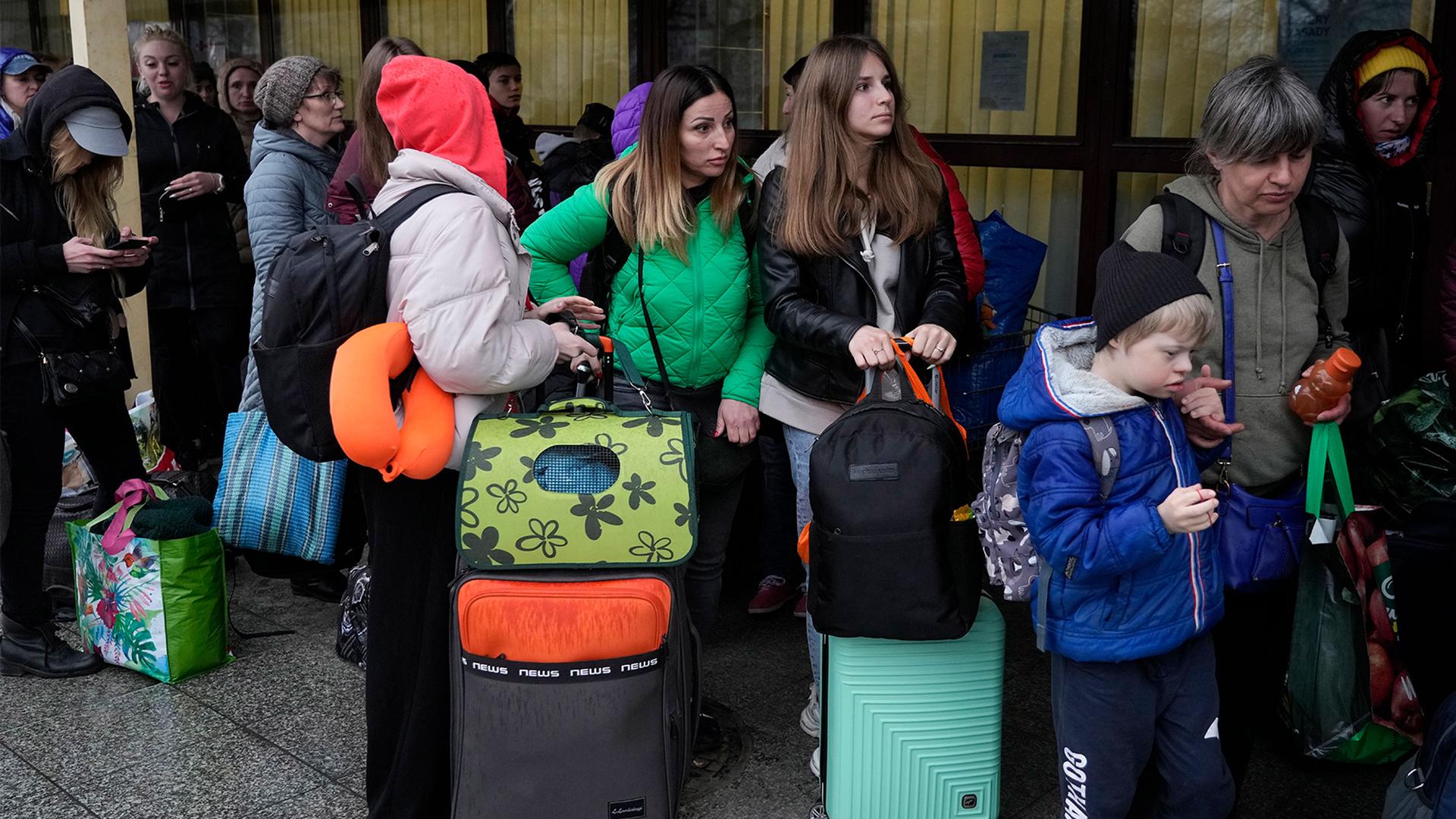Ukraine: The humanitarian catastrophe
Refugees wait to travel back to Ukraine from the train station in Przemysl, southeastern Poland, March 30, 2022.
Nearly 4 million people have fled Ukraine in the largest exodus that Europe has seen since World War II. More than half of the children in the country have been displaced, according to UNICEF. And people of all ages who’ve remained, or have been internally displaced, are faced with a faltering health care system. Many people are also experiencing shortages of heat, water, electricity and food.
Ukraine also has high numbers of people living with HIV and Hepatitis C, and low vaccination rates against measles, polio and even COVID-19.
And the medical journal The Lancet recently reported that the “war in Ukraine could worsen what is already one of the world’s most serious tuberculosis (TB) epidemics.”
As part of our regular series of conversations with Harvard University’s T.H. Chan’s School of Public Health, The World’s reporter Elana Gordon moderated a discussion with Michael VanRooyen, director of the Harvard Humanitarian Initiative, about the dire situation and the multiple health risks that refugees from Ukraine, and from around the world, face. VanRooyen is also the chairman of Emergency Medicine at Brigham and Women’s Hospital (@HHI).
You can find more discussions by clicking here.
